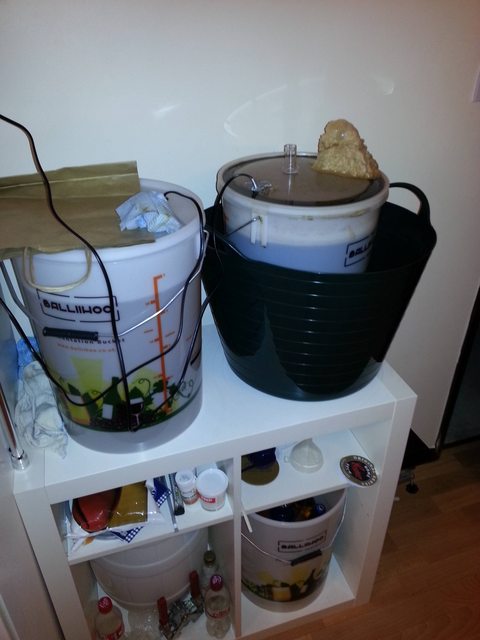So today, I popped out to get the bits and bobs for my next mini project.
I've realised that since I started to brew 20 odd years ago, things have changed a lot. But Coopers Aussie beers are still the best kits I've used. I love 'em - always give a consistently good brew.
So following the
Aussie Stout thread , I popped out and bought a tin of this.
However, my local Wilko and general-hardware-LHBS-type-sells-everything-and-anything shop don't stock DME. I thought all Wilko's stocked it (I usually use a big one) which gave me an opportunity to pop down to a friend's wife's shop which sells bespoke furniture, paints, hand painted items as well as home brew gear (particularly medium and high-end wines). Obviously, not being a stack-em-high-sell-em-cheap type of shop, it wasn't the cheapest, but as a good local shop should do, they have time to chat about everything home-brew wise.
In case you're interested, it's called
making the best(Clicky link) just south of Milton Keynes.
Whilst I was there, the owner's husband pointed me in the direction of
Wine Expert's LE2012 (clicky link)
These kits look pretty tasty - 18L of liquid already in the kit - add just 5L of water.
The wife is strangely interested as she thinks we should brew one of these and give a bottle to friends and relatives as we never really did anything to celebrate our wedding last year.
Thing is, I'm a big fan of Californian and Australian reds (My favourites are things like the better end of Wolfbass and Gallo). So if they bring one of these out with the right Aussie Shiraz or Californian Cabernet, I may well consider it.
So getting back to brew day (after all, this is the "Brewdays" forum), I used the following:
1 Coopers Stout Kit
~22 litres water
1kg Dark DME (Ritchies as this is what the shop stocks)
400g Light muscovado (it's what I had in)
Because I wasn't convinced the Muscovado and DME would easily mix, I boiled up some hot water and mixed it in really, really well with a whisk.
Definitely no lumps.
Then I threw the tin in - I thought I may as well as it gets the DME and sugar mixed in with the can and gives me the opportunity to get every last drop out of the can.
Just as well I did because it slipped out of my hand. I only lost a spoonful, but I'm worried now it might not be "quite strong enough" (I'm being paranoid, of course it's normal).
I then mixed some cold (very cold - it's freezing today!) water in and topped it up to ~21L. I was carefully watching the temperature strip when it suddenly dropped to 18c. Gah! Too cold to pitch!
Fortunately, I had a kettle boiling in case this happened so topped it up to 23L with boiling water whilst furiously mixing. Temperature went up to 22c and I pitched the yeast.
So all is looking good. Put a heater in it - I'm going to raise this one slightly higher temperature as I'm told it can actually stand it. Kit instructions say 21-27 although I think that would be slightly too high. I normally keep my beers static around 20-21.
Oops and while I remember, the OG was 1042@21c.







































